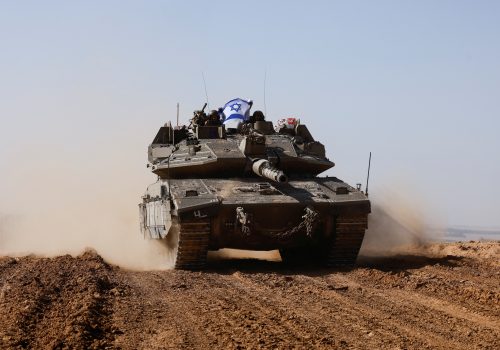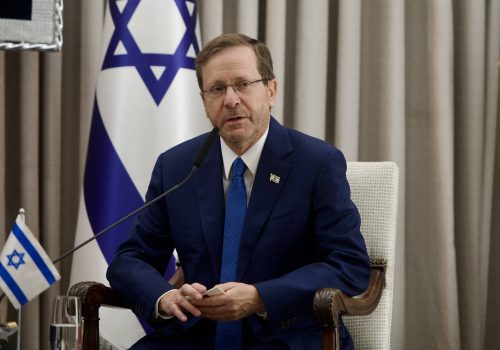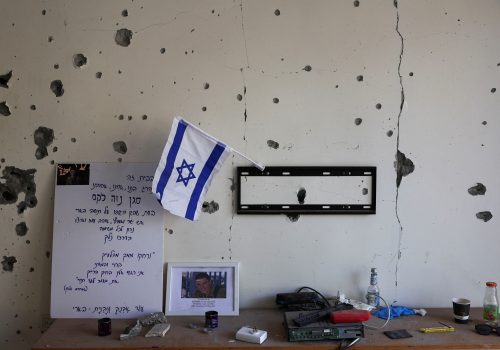What it took to rescue a US soldier’s mother from Gaza
In mid-December, I received harrowing news: The mother and uncle of an active-duty Palestinian-American US Army soldier were trapped inside northern Gaza in a Hamas-controlled enclave behind the front lines of the group’s war with Israel.
The soldier’s brother explained that the US military and Department of State told him that his mother was on a list that would allow her to exit Gaza, but that they were unable to deploy personnel to go and get her given her location behind the lines. To make matters worse, the soldier’s father had recently died, after being shot through his calf by a stray bullet and bleeding out. The father had been caught in crossfire between Hamas fighters attacking his neighborhood and Israeli forces seeking to demilitarize the area.
Our team had worked on difficult missions before, but this one presented unique challenges given the active conflict in Gaza.
My heart sank into the pit of my stomach. A fellow US soldier had lost his father, and his mother was in peril. Her situation looked bleak amid the fighting. She was out of water and had little food, and she was suffering from medical issues. It immediately reminded me of the scene in Saving Private Ryan in which General George Marshall, the legendary US Army chief of staff who would later serve as secretary of defense, secretary of state, and president of the Red Cross, said, “The boy’s alive. We are going to send somebody to find him. And we are going to get him the hell out of there.” Only instead of “him,” it was the soldier’s mother who needed rescue.
In addition to my role as a nonresident senior fellow at the Atlantic Council’s Middle East Programs, I am a board member at Special Operations Association of America, a nonprofit group advocating for members of the US special operations community. I quickly apprised the organization’s leadership of the situation and then notified my teammates. I had worked with many of them before on humanitarian missions to help secure the evacuation from Gaza of Palestinian pediatric oncology patients, nongovernmental organization workers, and a former poet in residence at Harvard University. The team immediately understood the gravity of the situation. What followed was several days of coordination with the US, Israeli, and Egyptian governments to plan and orchestrate a humanitarian operation to extract the soldier’s mother and uncle from the war zone and evacuate them to the United States. Our team had worked on difficult missions before, but this one presented unique challenges given the active conflict in Gaza, the location of the mother and uncle, and the number of actors involved.
We quickly began to engage officials from all three countries. Senior officials from the Office of the Secretary of the Army stepped in to make sure the soldier was taken care of while the rescue was being planned and organized. The compassion and professionalism of these Pentagon officials over the holidays was nothing short of remarkable. Deputy Assistant Secretary of State for Israeli-Palestinian Affairs Andrew P. Miller ensured that there was proper coordination with the United States and foreign governments and the family. Uniformed officers at the embassies in Cairo and Jerusalem ensured the Egyptian and Israeli governments were aware and connected us with officials in the Israel Defense Forces (IDF). I also reached out to one of Israeli Prime Minister Benjamin Netanyahu’s spokesmen, whom I had worked with professionally. Collectively, we formed an integrated team of national security professionals dedicated to saving the life of a US soldier’s mother.
We found ourselves teaching survival techniques from the other side of the world.
In parallel, our team sent directions to the mother and uncle about how to make potable water from nonpotable sources, such as toilet tanks, and used satellite imagery to identify for the mother nearby trees with leaves that could be used to produce drinking water. We found ourselves teaching survival techniques from the other side of the world. We then spent time assembling the network and resources in the United States and overseas required to perform the extraction and evacuation. Eventually, we came to the point where we were ready to go and, coordinating with the IDF, conducted the mission without incident, despite a few false starts due to security concerns.
The most difficult part to me was accessing the area behind the front line where the mother and uncle were trapped. When we started to plan the rescue, my team was concerned, for example, about Hamas fighters in the area who might be lying in wait to ambush, but also about other challenges in the war-marked landscape, such as blocked roads, unsafe buildings, and other obstacles. Some operations can take weeks or even months to plan. For this rescue, just a week and a half elapsed between deciding to move forward and the extraction.
Our team, along with colleagues from other organizations, has performed similar operations in the past. A team I worked with ran evacuation flights out of Kabul in the fall of 2021 for the US State Department and then facilitated the delivery of supplies and addressed other sensitive logistics issues in Ukraine. One of my teammates for this effort also worked on evacuations from Sudan in its ongoing civil war. There are some humanitarian evacuation and rescue operations around the world that, for any number of reasons, the US departments of State and Defense cannot or will not take on. Sometimes they lack the authority to do so. Other times a rescue might send a signal that could upend a delicate diplomatic situation. Still other times there are tactical and resource considerations that might give US officials pause. This case in Gaza was outside of the US remit because no US assets were on the ground in Gaza.
This is where my team and other organizations like it step in. We fill a humanitarian gap between the US Department of State’s evacuation efforts and the Department of Defense’s rescue operations that range from administrative support to life-sustaining logistics that evacuees need while they await noncombatant evacuation, rescue, or self-extraction. We serve as case managers who come equipped to teach survival techniques in conflict areas with the ability to source logistics, liaise with governments, and assemble networks necessary to either directly evacuate those in need or assist them in doing so. We do not interfere in official government efforts and instead seek to augment official efforts whenever possible.
The war in Gaza is likely to continue for many months as the Israeli military works to achieve Netanyahu’s stated goal of demilitarizing Hamas following the terrorist attack on October 7, 2023. This is a highly dangerous and diplomatically delicate moment, and there will be more evacuations and rescue missions that governments will be unable or unwilling to mount. Groups like ours will remain on alert to provide support whenever possible.
Alex Plitsas is a nonresident senior fellow with the Middle East Programs’ N7 Initiative, a partnership between the Atlantic Council and Jeffrey M. Talpins Foundation working to strengthen and deepen Arab-Israeli normalization. He is also currently a principal and industry director for aerospace and defense and high-tech electronics at Providence Consulting Group. He previously served as chief of sensitive activities for special operations and combating terrorism in the US Office of the Secretary of Defense.
Further reading
Fri, Dec 1, 2023
What to expect in the next phase of Israel’s war against Hamas
New Atlanticist By Alex Plitsas
After a pause in fighting ended Friday, Israel will press ahead with a southern Gaza campaign that will face new challenges.
Tue, Dec 19, 2023
Israeli President Herzog: ‘An amalgamation of forces’ will likely govern post-conflict Gaza
New Atlanticist By
The Israeli president also confirmed that Israel would be willing to pause fighting in Gaza again in exchange for hostages.
Thu, Dec 7, 2023
Does the Resistance Axis believe its propaganda about Israel? The October 7 attack seems to suggest so.
IranSource By
For the Resistance Axis, portraying Israel as a temporary entity that will inevitably melt away has an obvious utility, and is one that furthers the goal of destroying the Jewish state.
Image: Displaced Palestinians hold bottles and jerrycans to fill them with water. Charitable organizations are distributing water to people affected by the war in Gaza.


